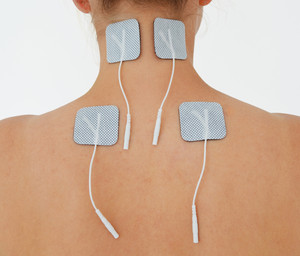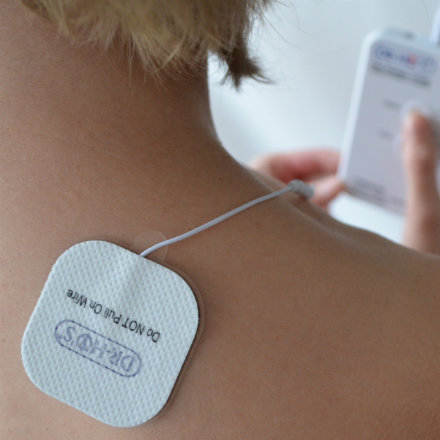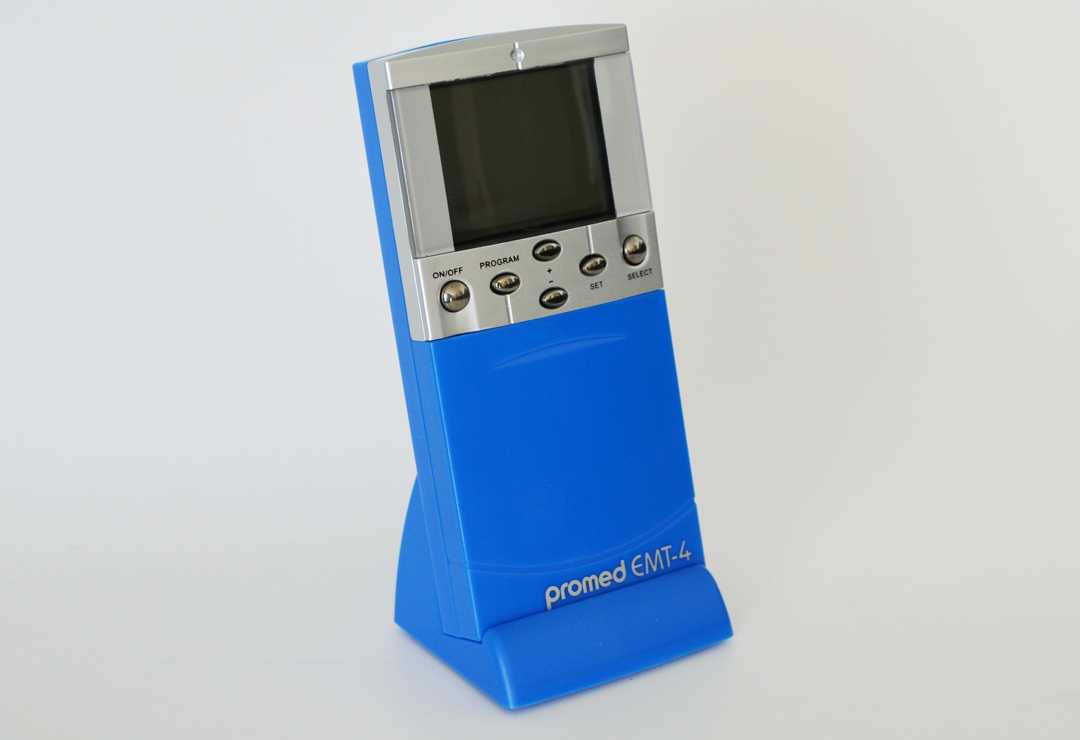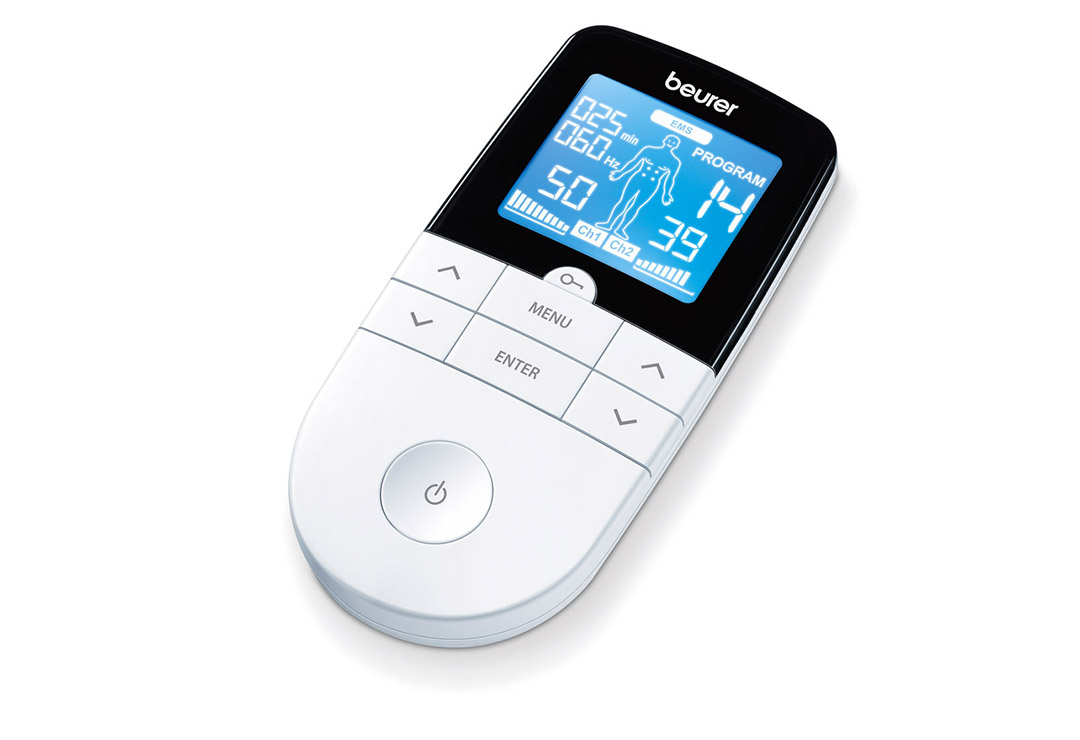The pain in the cervical spine can be acute or chronic, occurs rather frequently and particularly affects people between 20 and 60 years. This pain can radiate from the cervical spine all the way to the arms, shoulders and the back of the head. In some cases even as far as the forehead. The muscles surrounding the cervical spine are hardened and head movement is limited.
In addition to neck pains, cervical syndrome's symptoms also include severe headaches, dizziness, nausea, difficulty swallowing and tinnitus, if the upper cervical spine is suffering from this type of disorder. If you experience unexpected occurrence of this kind of pain or persistent headaches, migraine with aura, visual disturbances or loss of strength and feeling in the arms or legs, you must consult your physician. When lower cervical spine is blocked, dull and difficult to describe pain can be felt in the arms, all the way to the hands. You may also experience a tingling sensation and an unpleasant feeling in all fingers, as well as a general coldness. The sudden immobility may even cause 'acute torticollis', in which the pain radiates to the head, the shoulders, as well as the arms and all the way to the pinky.
There are various classifications of these symptoms, which also depend on the respective root cause. For example, the functional neck syndrome is due to a poor posture. The degenerative cervical spine syndrome can occur as a result of wear and tear. The post traumatic cervical syndrome is a consequence of an accident. The most common of these fall into area of degenerative cervical syndromes, i.e. the diseases caused by wear and tear.
A reason for the frequent occurrence of cervical spine syndrome is probably that more and more people are spending a lot of time sitting down. Working from the computer, watching television, long car rides - many spend most of their time sitting down, without even realizing it. This is also the reason why 'cervical spine syndrome' is considered one of the typical diseases of workers. The lack of exercise causes the muscles, that otherwise supports the cervical area, to become weaker and weaker, while other muscles become tense due to malposition. Cervical spine syndrome can cause restriction of movement, painful muscle tension and pain in the surrounding parts of the body, if left untreated.
Yet, cervical spine syndrome may also arise as a result of diseases such as spinal canal stenosis (narrowing of the spinal canal), facet syndrome (arthritis of the joints of the vertebrae), fibromyalgia ('muscle fiber pain') or osteochondrosis (modification of the intervertebral disc cartilage). It can also be the result of a blockage, i.e. a dislocated vertebra, as well as vertebral fractures. The freedom of movement is restricted in all directions and muscle hardening occurs, which is sensitive to pressure.
Another classification distinguishes between local, radicular, and pseudoradicular cervical spine syndrome. In the case of local cervical spine syndrome, the cause of the problems is sought in the cervical spine itself. The pain does not radiate into the arms. The reasons can be wear and tear and blockages of spinal joints that lie between the individual vertebrae. This can be the result of intervertebral disc damage and changes of the intervertebral space, and leads to the typical local cervical spine complaints. In the radicular cervical syndrome, the pain also occurs in the neck itself, but also in one or both arms, where they are then more prevalent. These pains are clearly confined and originate from a nerve root exiting the spinal cord, that has been squeezed together. Oftentimes, a feeling of numbness, tingling, weakness or even paralysis of the arm muscles supplied by this nerve can be experienced around the affected nerve root. A herniated disc, for example, can be the cause of a radicular cervical spine syndrome. There, an spinal disc bulges out and presses on the respective nerve root. Symptoms similar to those of disc herniation occur with new bone formation, which is common in higher age groups. There, the wear between two vertebrae leads to new bone formation, which may then exert pressure on a nerve root. Pseudoradicular cervical spine syndrome refers to complaints, which radiate out from the cervical spine into one or both arms, and which involve pain that can only be located to some extent, as it is felt rather diffusely. The complaints do not stem from a compressed nerve root, hence the term 'pseudo'-radicular. Malfunctions in the lower cervical spine, which show hardly any signs of wear, are a common cause. There is no feeling of numbness or paralysis.
These are the main causes of cervical spine disorders. Less common are bone tumors in the cervical spine, or grown-together vertebrae and outer callus formation as a result of osteoarthritis. Osteoporosis, trauma from injuries, neuritis and rheumatic diseases can also trigger the pain.
In acute cervical spine syndrome and the acute pain that goes with it, the cause is usually found in the muscles and the fibrous membranes and tissue that surrounds the muscles. The pain is a result of injury of these muscles. The chronic, long-lasting painful cervical spine syndrome is a result of slipped discs or malfunctioning of the intervertebral joints.
Wellnessproducts > Pain treatment with TENS
Syndrome of cervical spine (cervical spine syndrome)'Syndrome' is a generic term for various symptoms or signs of illness. Especially in cases of chronic neck pains, the doctor's diagnosis is often quickly derived and carries the designation 'cervical spine syndrome'. However, this is but an umbrella term that describes uncharacteristic problems in the cervical spine. It does not refer to any specific condition, which can have a number of different causes.
 TreatmentTherapy starts with the aching nerves or tense muscles. An electrotherapy such as TENS/EMS is particularly helpful in this case, because it quickly and efficiently relieves pain and relaxes muscles. The electrical stimulation treatment blocks the pain and the painfully tensed muscles relax and more blood is circulated through them. The pain also subsides due to the relaxation and the release of endorphins, the body's own pain blockers. The classic electro-stimulation can significantly contribute to the relief of complaints by means of easing and relaxing the muscles. A further step is the targeted developing of muscles in the affected areas around the neck spine. The stronger the muscles, the longer they can go without getting exhausted, thus offering better protection of spinal discs and vertebrae, which can not be exercised. TENS and EMS also have the advantage that you perform them at home by yourself, whenever needed. The treatment area includes the cervical zone of the upper trapezoid muscle and the muscles along the spine. This is achieved by sticking the mini electrodes left and right side of the cervical spine in pairs. Also, for pain in the neck, shoulders and arms, four electrodes can be attached. This is relatively easy thanks to self-adhesive pads. You can further optimize the effect by adjusting the stimulation frequency on the small practical device, as well as by selecting various electrode sizes. In any case, one should not lose any time in relieving the pain, so that the training of the so-called pain memory can be prevented. Published on 17.09. by  TENS and Electro Acupuncture TENS and Electro Acupuncture Acupuncture has been proven to have astounding physical and psychological benefits - but only for those who have time for treatments and don't mind needles. With TENS, you can enjoy the benefits of acupuncture and acupressure without the sharps!  Promed EMT-4 (6.0 Volt): TENS + EMS, CHF 94.00 Promed EMT-4 (6.0 Volt): TENS + EMS, CHF 94.00TENS and EMS unit, combination tool for treatment, training and rehabilitation |
- FREE DELIVERY (ECONOMY)
- Safe shopping: Payment with TWINT, credit card, Paypal or Postfinance
- Warehouse in Switzerland (Widnau SG)


 Beurer EM 49 Digital EMS/TENS unit, CHF 69.00
Beurer EM 49 Digital EMS/TENS unit, CHF 69.00